State Assembly Republicans are on a roll. After a third consecutive election cycle in 2014 that added seats to their already sizable majority, Republicans today control the Wisconsin Assembly 63-36, the largest GOP majority since 1957. With a majority this large, Republicans can pass any legislation they like without a single Democrat vote if necessary.
Democrats, on the other hand, hope to have bottomed out on their election losses. Going into the 2010 midterms, Democrats narrowly controlled the Assembly 51-46-2. But the 2010 November elections were not kind to their party, and they have been on a political downhill slide ever since. Over the last three election cycles, Assembly Democrats have lost 15 seats.
So the big question for the 2016 election is: Can Assembly Democrats stop the bleeding and pick up “swing seats” currently held by Republicans in a presidential election year that usually favors their party at the top of the ticket?
To be successful in 2016, Assembly Democrats need to recruit top-tier candidates to run in winnable districts and raise enough money to compete with well-funded Republican incumbents. These tasks will not be easy. They must compete for resources with a presidential race and a U.S. Senate election on the ballot in Wisconsin next year.
Below are 10 Assembly Republican Districts (ADs) that could be competitive in 2016 under the right circumstances as well as several observations on political factors that could make a difference in the outcome next year.
Geography
Ten Assembly seats are on the 2016 “watch list.” One seat is on the eastern side of the state (AD-1), two are in central Wisconsin (AD-72 and AD-85), and seven are on the western side of the Badger State (AD-50, AD-51, AD-67, AD-68, AD-70, AD-75, AD-93). Nine seats are classified as true “swing” districts, and one, AD-51, is a “strong-democrat” district. Mitt Romney carried five districts in 2012; Barack Obama five. The western side of Wisconsin is classic swing territory, and Democrats tend to do well there in presidential election years. These seven districts will be primary battleground targets.
First-timers
Five of the 10 incumbents on this list are in their first term, having been elected in the GOP wave election in 2014: Kitchens, Heaton, Novak, Quinn and VanderMeer. The other five incumbents are in their third or fourth terms. Democratic strategists will be sure to target first-time GOP incumbents, hoping to pick them off in 2016 before “long-term” incumbency can settle in. As a general rule, it’s more difficult to defeat a long-term incumbent.
Top-of-the-ticket influence
Two top-of-the-ticket races will take place in Wisconsin in 2016: (1) the presidential ballot — which could include Scott Walker, and (2) the U.S. Senate race — which will likely be a rematch between GOP Sen. Ron Johnson and his 2010 opponent Russ Feingold. A close presidential race in Wisconsin could influence down-ballot races for the Assembly in 2016, particularly in swing seats. Again, nine of the 10 seats on this list are classified as “swing” districts.
Voter turnout increases
In the 2012 presidential election, Wisconsin had 70 percent voter turnout, second highest in the country. If an incumbent represents a strong Democrat or Republican district, high voter turnout often makes it more difficult to defeat that incumbent. In swing districts, however, high turnout can lead to a more competitive election. Not all swing seats will be affected by a presidential year turnout, but some of them certainly could be.
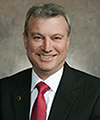 Joel Kitchens (R) — Assembly District 1
Joel Kitchens (R) — Assembly District 1
- Walker 2010: 54%
- Romney 2012: 50%
- Walker 2014: 58%
- Partisan Average: 50.7% GOP
- District Classification: Swing
Ed Brooks (R) — Assembly District 50 
- Walker 2010: 56%
- Obama 2012: 55%
- Walker 2014: 53%
- Partisan Average: 51.4% GOP
- District Classification: Swing
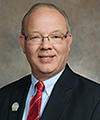 Todd Novak (R) — Assembly District 51
Todd Novak (R) — Assembly District 51
- Walker 2010: 50%
- Obama 2012: 60%
- Walker 2014: 48%
- Partisan Average: 44.6% GOP
- District Classification: Strong Dem
 Kathy Bernier (R) — Assembly District 68
Kathy Bernier (R) — Assembly District 68
- Walker 2010: 55%
- Obama 2012: 52%
- Walker 2014: 55%
- Partisan Average: 49.2% GOP
- District Classification: Swing
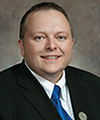 Scott Krug (R) — Assembly District 72
Scott Krug (R) — Assembly District 72
- Walker 2010: 56%
- Romney 2012: 51%
- Walker 2014: 56%
- Partisan Average: 50.3% GOP
- District Classification: Swing
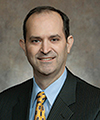 Dave Heaton (R) — Assembly District 85
Dave Heaton (R) — Assembly District 85
- Walker 2010: 54%
- Obama 2012: 53%
- Walker 2014: 55%
- Partisan Average: 48% GOP
- District Classification: Swing
 Tom Larson (R) — Assembly District 67
Tom Larson (R) — Assembly District 67
- Walker 2010: 58%
- Romney 2012: 51%
- Walker 2014: 57%
- Partisan Average: 52% GOP
- District Classification: Swing
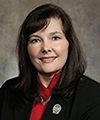 Nancy VanderMeer (R) — Assembly District 70
Nancy VanderMeer (R) — Assembly District 70
- Walker 2010: 57%
- Romney 2012: 51%
- Walker 2014: 57%
- Partisan Average: 50.7% GOP
- District Classification: Swing
Romaine Quinn (R) — Assembly District 75 
- Walker 2010: 56%
- Romney 2012: 52%
- Walker 2014: 58%
- Partisan Average: 51.8% GOP
- District Classification: Swing
 Warren Petryk (R) — Assembly District 93
Warren Petryk (R) — Assembly District 93
- Walker 2010: 57%
- Romney 2012: 52%
- Walker 2014: 56%
- Partisan Average: 51.1% GOP
- District Classification: Swing
So why should REALTORS® watch these 10 state Assembly races in 2016? Because the outcome will have a direct impact on homeowners, businesses and REALTORS®. The party that controls the Legislature sets the legislative agenda for the next two years. The WRA has a direct interest in issues that matter to the housing industry, and the men and women who get elected will have the final say on which bills pass or die.
Joe Murray is Director of Political and Governmental Affairs for the WRA.